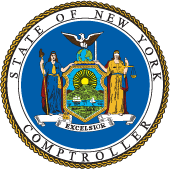New York City Public Schools (NYCPS) needs to do more to ensure students are matched to high schools in line with existing regulations, according to an audit released by New York State Comptroller Thomas P. DiNapoli. The audit found that NYCPS did not always follow required placement policies, which set how certain groups of students should be prioritized.
“Thousands of New York City students rely on a fair and transparent system to get into the high school programs that fit their needs and to give them the best opportunity for a bright future,” said DiNapoli. “My office’s audit found that the city’s process is overlooking some students who face economic hardship. The system needs to be more consistent and transparent to ensure every student is matched according to the placement rules.”
Each year, more than 70,000 eighth graders apply to high school, ranking their program choices. NYCPS uses a matching algorithm to match students with high school programs. Admission depends on factors like available seats, program priorities and the student’s lottery number. The audit reviewed selected aspects of NYC’s high school admissions process from the 2018–2019 to 2024–2025 school years, excluding specialized high school admissions.
Students in Temporary Housing Not Properly Prioritized
The matching algorithm used only one address per student, which meant as many as 7,000 students in shelters or temporary housing may not have received geographic priority for schools near both their current and former homes, as required by NYCPS policy.
Low-Income Students Overlooked
NYCPS used free or reduced-price lunch eligibility data to identify low-income students. But because every NYC student can receive meals, NYCPS does not always collect the required paperwork, so some children may not be identified as low-income to receive priority for schools with diversity in admissions policies.
Manual Placement Problems
Auditors found that more than 200 students should have been manually placed into schools but were either not or were placed in ways that contradicted NYCPS’ own rules. Some were moved to lower-performing schools without documentation. This often occurred when students either did not match with any of their choices or were new and entered the system after the official offers were released. In several cases, students were not placed at all, even though rules require NYCPS to place every student who applies. For students who were manually placed incorrectly, explanations were usually noted in NYCPS records. However, for students who were not manually placed as required, there was little to no record explaining why these students were not processed according to NYCPS policy.
Lack of Policies and Procedures
NYCPS lacks formal written policies guiding how the placement algorithm is run, how offers are approved, or how exceptions should be handled. This lack of documentation increases the risk of inconsistent or inequitable outcomes. For example, for the 2023-2024 school year, NYCPS reduced the number of seats available to three school programs after students had already applied. There was no written explanation, approval trail or policy justifying the change, despite its clear impact on student access.
Public Reports Were Late or Incomplete
The city failed to meet legally required deadlines for publishing admissions and enrollment data. Some reports were posted late or were missing key school-level information, limiting transparency for families. After auditors raised this issue, NYCPS updated the reports to include the missing information. NYCPS also acknowledged the challenges in meeting these deadlines and indicated staff will work with the New York City Council to address compliance.
DiNapoli’s auditors recommended NYCPS:
- Ensure students in temporary housing and low-income students are correctly prioritized;
- Create written rules for matching and complaint handling;
- Improve outreach to families and schools about incomplete applications or FRL data; and
- Publish required reports on time and in full.
In response to the audit, NYCPS generally agreed with the recommendations and said they are committed to ensuring a matching algorithm that supports equitable school access for all students, including low-income students and students in temporary housing.
Audit
New York City Public Schools: Management of the Student-School Matching Algorithm
